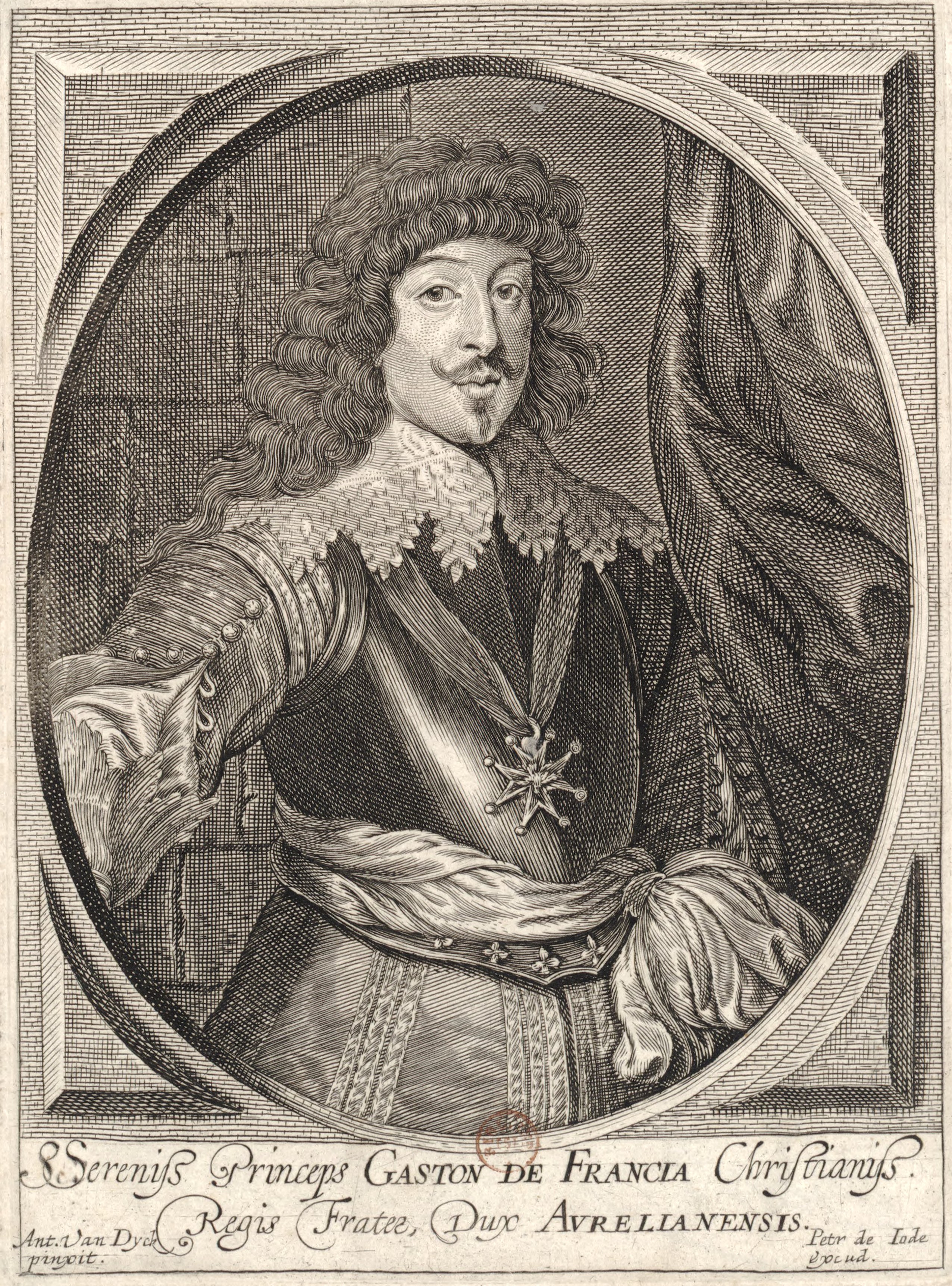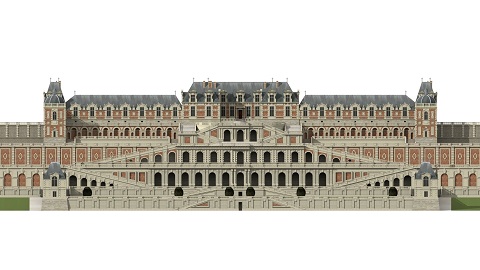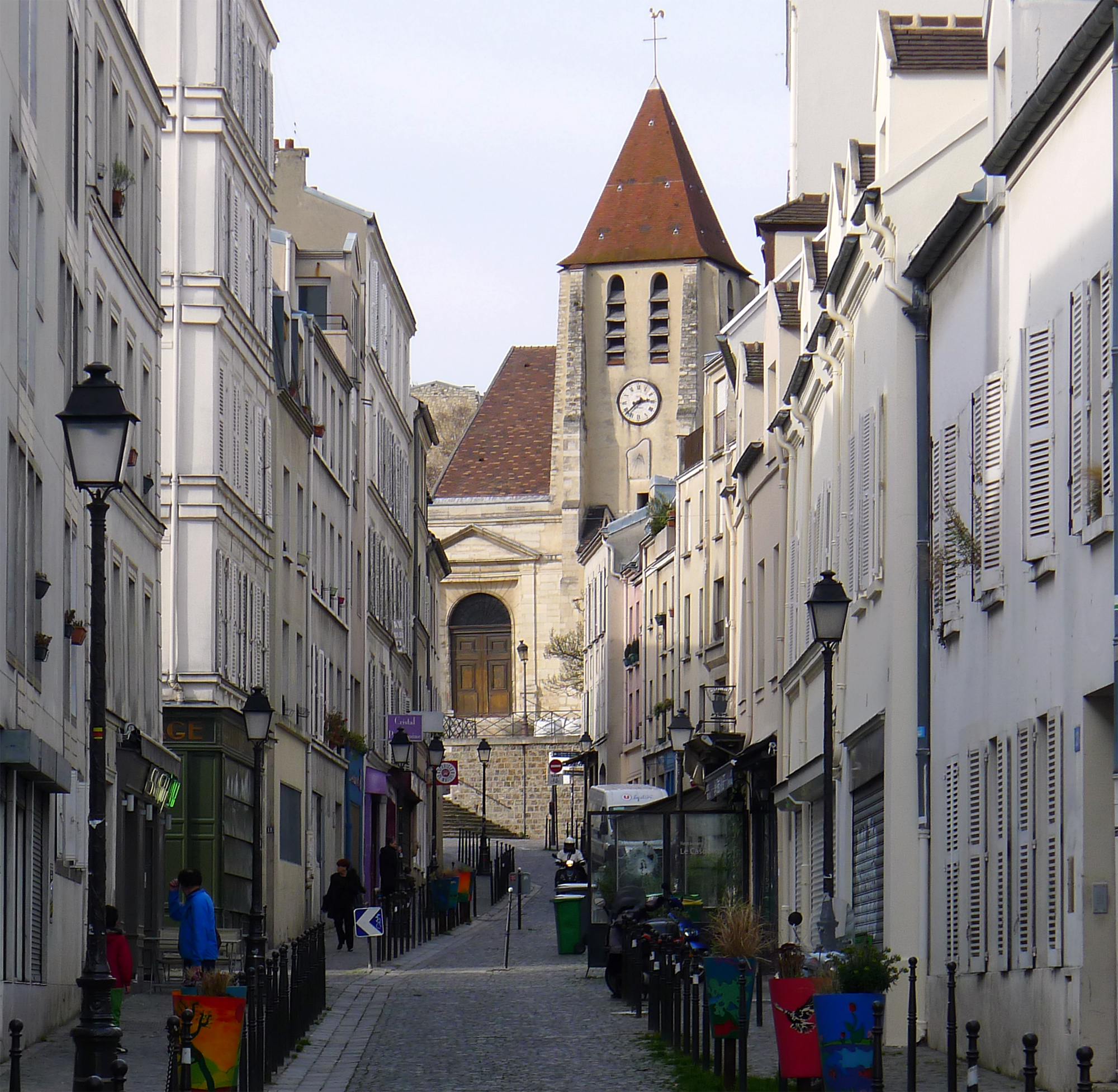|
Henrietta Gordon
Henrietta Gordon (born c. 1628; ''floruit'' 1672) was a Scottish-born courtier, a maid of honour to Princess Henrietta, youngest daughter of Charles I of England. Early life Henrietta Gordon, was the youngest daughter of Lord John Gordon, created Viscount of Melgum and Lord Aboyne in 1627, by Sophia Hay, fifth daughter of Francis Hay, 9th Earl of Erroll. She was born about 1628. Her father was the second son of George Gordon, 1st Marquis of Huntly, by his wife, the former Lady Henrietta Stewart, eldest daughter of the first Duke of Lennox. He was burned to death at Frendraught in October 1630; and, his widow dying on 22 March 1642, Henrietta was left an orphan. She had been brought up a Roman Catholic, and, her guardian and uncle George Gordon, 2nd Marquis of Huntly, being a Protestant, her mother on her deathbed commended her to the care of her father confessor, Gilbert Blackhall. He went to Paris in the hope of obtaining instructions from Henrietta's grandmother, the Do ... [...More Info...] [...Related Items...] OR: [Wikipedia] [Google] [Baidu] |
Floruit
''Floruit'' (; abbreviated fl. or occasionally flor.; from Latin for "they flourished") denotes a date or period during which a person was known to have been alive or active. In English, the unabbreviated word may also be used as a noun indicating the time when someone flourished. Etymology and use la, flōruit is the third-person singular perfect active indicative of the Latin verb ', ' "to bloom, flower, or flourish", from the noun ', ', "flower". Broadly, the term is employed in reference to the peak of activity for a person or movement. More specifically, it often is used in genealogy and historical writing when a person's birth or death dates are unknown, but some other evidence exists that indicates when they were alive. For example, if there are wills attested by John Jones in 1204, and 1229, and a record of his marriage in 1197, a record concerning him might be written as "John Jones (fl. 1197–1229)". The term is often used in art history when dating the career ... [...More Info...] [...Related Items...] OR: [Wikipedia] [Google] [Baidu] |
Gilbert Blackhall
Gilbert Blackhall or Blakhal (died 1671) was a Scottish Catholic missionary priest. He is now remembered for his autobiographical writings. Life Blackhall's background is believed to have been in Aberdeenshire. He spent a period as a soldier of fortune. He entered the Scotch College, Rome in 1626, was ordained priest, and returned to Scotland in 1630. He encountered opposition from Jesuits there, however, and left for Paris, where he became confessor to Lady Isabella Hay, eldest daughter of Francis Hay, 9th Earl of Erroll. Going to Brussels in search of patronage, he had an audience with Isabella Clara Eugenia, right at the end of her life. By persistence he found Lady Isabella a pension, enabling her to return to Scotland. He himself turned down a position, thought to be with the Institute of the Blessed Virgin Mary. But Isabella Clara Eugenia's death in 1633 closed down chances for Scots in Brussels at court. Lady Isabella was in a house of canonesses at Mons, in 1637. In 1 ... [...More Info...] [...Related Items...] OR: [Wikipedia] [Google] [Baidu] |
Mademoiselle De La Fayette
Mademoiselle (abbreviated as ''Mlle'' or ''M'') may refer to: * Mademoiselle (title), the French-language equivalent of the title "miss" Film and television * ''Mademoiselle'' (1966 film), a French-British drama directed by Tony Richardson * ''Mademoiselle'' (2001 film), a French comedy directed by Philippe Lioret * Mlle (TV channel), now MOI ET CIE, a Canadian French-language channel Music * "Mademoiselle" (song), by Styx, 1976 * "Mademoiselle", a song by Murray Head from '' Between Us'', 1979 * "Mademoiselle", a song by Eddy Howard, 1952 Other uses * Mademoiselle, a typeface designed by Tommy Thompson * ''Mademoiselle'' (magazine), a defunct American women's magazine See also * * *Damsel (other) *Demoiselle (other) *Fräulein ''Fräulein'' ( , ) is the German language honorific for unmarried women, comparable to Miss in English and Mademoiselle in French. Description ''Fräulein'' is the diminutive form of ''Frau'', which was previously reser ... [...More Info...] [...Related Items...] OR: [Wikipedia] [Google] [Baidu] |
Elizabeth Charlotte Of The Palatinate
Princess Elizabeth Charlotte of the Palatinate (german: Prinzessin Elisabeth Charlotte von der Pfalz), (french: Princesse Élisabeth-Charlotte du Palatinat); known as Liselotte von der Pfalz, 27 May 1652 – 8 December 1722) was a German member of the House of Wittelsbach and, as ''Madame'' (''Duchesse d'Orléans''), the second wife of Philippe I, Duke of Orléans (younger brother of Louis XIV of France), and mother of Philippe II, Duke of Orléans, France's ruler during the Regency. She gained literary and historical importance primarily through preservation of her correspondence, which is of great cultural and historical value due to her sometimes very blunt descriptions of French court life and is today one of the best-known German-language texts of the Baroque period. Although she had only two surviving children, she not only became the ancestress of the House of Orléans, which came to the French throne with Louis Philippe I, the so-called "Citizen King" from 1830 to 1 ... [...More Info...] [...Related Items...] OR: [Wikipedia] [Google] [Baidu] |
Lady Of The Bedchamber
Lady of the Bedchamber is the title of a lady-in-waiting holding the official position of personal attendant on a British queen regnant or queen consort. The position is traditionally held by the wife of a peer. They are ranked between the Mistress of the Robes and the Women of the Bedchamber; unlike the latter they are not in regular attendance, however they are on duty for the more important public occasions. On overseas visits Queen Elizabeth II was usually accompanied by two ladies-in-waiting, one of whom was usually a Lady of the Bedchamber. The equivalent title and office has historically been used in most European royal courts (Dutch: ''Dames du Palais''; French: ''Dames'' or ''Dame de Palais''; German: '' Hofstaatsdame'' or '' Palastdame''; Italian: '' Dame di Corte''; Russian: '' Hofdame'' or '' Statsdame''; Spanish: '' Dueña de honor''; Swedish: ''Statsfru''). History In the Middle Ages, Margaret of France, the wife of King Edward I of England, is noted to have ... [...More Info...] [...Related Items...] OR: [Wikipedia] [Google] [Baidu] |
Philippe I, Duke Of Orléans
'' Monsieur'' Philippe I, Duke of Orléans (21 September 1640 – 9 June 1701), was the younger son of King Louis XIII of France and his wife, Anne of Austria. His elder brother was the "Sun King", Louis XIV. Styled Duke of Anjou from birth, Philippe became Duke of Orléans upon the death of his uncle Gaston in 1660. In 1661, he also received the dukedoms of Valois and Chartres. Following Philippe's victory in battle in 1671, Louis XIV granted his brother the dukedom of Nemours, the marquisates of Coucy and Folembray, and the countships of Dourdan and Romorantin. Throughout his life, Philippe was open about his preference for male lovers, most notably the Chevalier de Lorraine, and freely acted with effeminacy. He married twice, first to Henrietta of England and then to Elizabeth Charlotte of the Palatinate, fathering several children. Philippe was the founder of the House of Orléans, a cadet branch of the ruling House of Bourbon, and thus the direct ancestor of L ... [...More Info...] [...Related Items...] OR: [Wikipedia] [Google] [Baidu] |
Anne Marie Louise D'Orléans, Duchess Of Montpensier
Anne Marie Louise d'Orléans, Duchess of Montpensier, (, – ) known as ''La Grande Mademoiselle'', was the only daughter of Gaston d'Orléans with his first wife, Marie de Bourbon, Duchess of Montpensier. One of the greatest heiresses in history, she died unmarried and childless, leaving her vast fortune to her cousin Philippe I, Duke of Orléans. After a string of proposals from various members of European ruling families, including Charles II of England, Afonso VI of Portugal, and Charles Emmanuel II of Savoy, she eventually fell in love with the courtier Antoine Nompar de Caumont and scandalised the court of France when she asked Louis XIV for permission to marry him, as such a union was viewed as a '' mésalliance''. She is best remembered for her role in the ''Fronde'' and her role in bringing the famous composer Jean-Baptiste Lully to the king's court,Cowart, p 19 and her ''Mémoires''. Early years Anne Marie Louise d'Orléans was born at the Palais du Louvre in P ... [...More Info...] [...Related Items...] OR: [Wikipedia] [Google] [Baidu] |
Claire-Clémence De Maillé-Brézé
Claire Clémence de Maillé (25 February 1628 – 16 April 1694) was a French noblewoman from the Brézé family and a niece of Cardinal Richelieu. She married Louis de Bourbon, Prince of Condé, known as ''Le Grand Condé'' (The Great Condé), and became the mother of Henri Jules. She was Princess of Condé and Duchess of Fronsac. Life Claire Clémence was born at Brézé in the historical province of Anjou, France, as the daughter of Urbain de Maillé, ''marquis de Brézé'', ''seigneur de Milly'', ''seigneur de Thévalles'', and Marshal of France. Her mother was Nicole du Plessis, the sister of Cardinal Richelieu. She had an older brother, Jean Armand de Maillé-Brézé, who became an Admiral of the French Royal Navy (''La Royale''). When she was five years old, her uncle, the Cardinal, arranged her betrothal to the French prince du sang, Louis de Bourbon, who would become the renowned general ''le Grand Condé'', "the Great Condé." Under the pretext of educating her ... [...More Info...] [...Related Items...] OR: [Wikipedia] [Google] [Baidu] |
Château De Saint-Germain-en-Laye
The Château de Saint-Germain-en-Laye () is a former royal palace in the commune of Saint-Germain-en-Laye, in the ''département'' of Yvelines, about 19 km west of Paris, France. Today, it houses the ''musée d'Archéologie nationale'' (National Museum of Archaeology). History 12th–13th centuries The first castle, named the ''Grand Châtelet'', was built on the site by Louis VI in 1124. The castle was expanded by Louis IX in the 1230s. Louis IX's chapelle Saint Louis at the castle belongs to the Rayonnant phase of French Gothic architecture. A 1238 charter of Louis IX instituting a regular religious service at the chapel is the first mention of a chapel having been built at the royal castle. This was a ''Sainte Chapelle'', to house a relic of the Crown of Thorns or the True Cross. Its plan and architecture prefigure the major Sainte-Chapelle which Saint Louis built within the Palais de la Cité at Paris between 1240 and 1248. Both buildings were built by Louis's fa ... [...More Info...] [...Related Items...] OR: [Wikipedia] [Google] [Baidu] |
Fronde
The Fronde () was a series of civil wars in France between 1648 and 1653, occurring in the midst of the Franco-Spanish War, which had begun in 1635. King Louis XIV confronted the combined opposition of the princes, the nobility, the law courts (''parlements''), as well as most of the French people, and managed to subdue them all. The dispute started when the government of France issued seven fiscal edicts, six of which were to increase taxation. The ''parlements'' resisted and questioned the constitutionality of the King's actions and sought to check his powers. The Fronde was divided into two campaigns, the Parlementary Fronde and the Fronde of the Princes. The timing of the outbreak of the Parlementary Fronde, directly after the Peace of Westphalia (1648) that ended the Thirty Years' War, was significant. The nuclei of the armed bands that terrorized parts of France under aristocratic leaders during that period had been hardened in a generation of war in Germany, where troo ... [...More Info...] [...Related Items...] OR: [Wikipedia] [Google] [Baidu] |
Charonne
The Charonne quarter is an area of the 20th arrondissement of Paris named after a former municipality in the area, which was merged into the city of Paris in 1860 by Napoleon III and split between Charonne quarter (south part), the Père-Lachaise quarter and Saint-Fargeau quarter (north part). The historic centre of Charonne is located around the junction of Rue de Bagnolet and Rue Saint-Blaise, in the vicinity of the parish church of Saint-Germain-de-Charonne (which is on the Père-Lachaise quarter). The metro station called Charonne, notable for the demonstration of 8 February 1962, is named after a street in the 11th arrondissement – Rue de Charonne, in the Bastille neighbourhood – and is not actually located in the district of Charonne, which covers the southern half of the 20th arrondissement The 20th arrondissement of Paris (known in French as the ''XXe arrondissement de Paris'' or simply as "''le vingtième''") is the last of the consecutively numbered arrondisse ... [...More Info...] [...Related Items...] OR: [Wikipedia] [Google] [Baidu] |
Madame De Brienne
Madame may refer to: * Madam, civility title or form of address for women, derived from the French * Madam (prostitution), a term for a woman who is engaged in the business of procuring prostitutes, usually the manager of a brothel * ''Madame'' (1961 film), a Spanish-Italian-French film * ''Madame'' (2017 film), a French comedy-drama film * Madame (singer) (born 2002), Italian singer and rapper * Madame, puppet made famous by entertainer Wayland Flowers ** Madame's Place, a 1982 sitcom starring Madame * Madame (clothing), an Indian clothing company Places * Île Madame, French island on the Atlantic coast * Palazzo Madama, seat of the Senate of the Italian Republic in Rome * Palazzo Madama, Turin, Italian palace See also * Madam (other) Madam is a respectful title for a woman (often "Ma'am" or "Madame"). Madam may also refer to: * Madam (prostitution), a term for a woman who is engaged in the business of procuring prostitutes, usually the manager of a brothel * MAD ... [...More Info...] [...Related Items...] OR: [Wikipedia] [Google] [Baidu] |

.jpg)
_sitting_on_a_throne_with_his_brother_Philippe%2C_Duke_of_Orléans.jpg)


